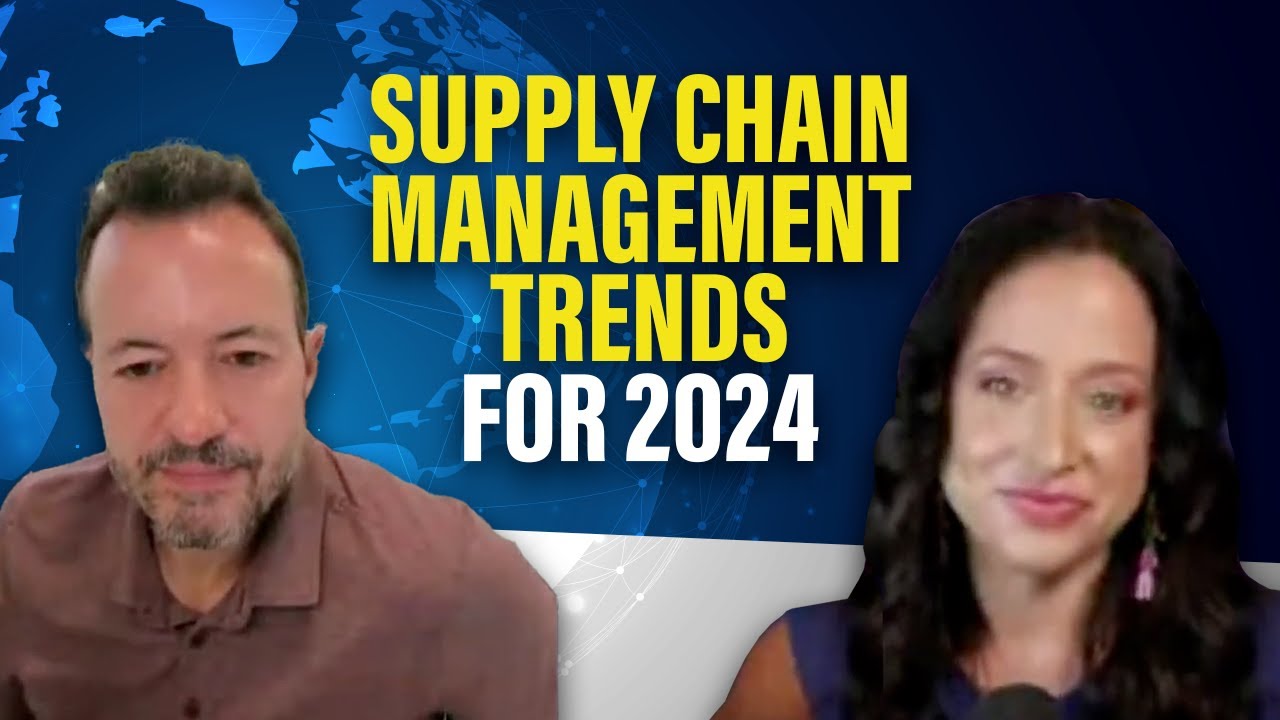ASCM's Top Trends in Supply Chain for 2024
Summary
TLDR在2024年供应链管理专业人士协会(ASCM)的十大趋势发布会上,主持人Matthew Talbert与专家小组讨论了供应链领域的关键趋势。专家们强调了数字化供应链作为基础的重要性,并探讨了大数据、人工智能、机器学习等技术如何提高供应链的效率和透明度。同时,讨论了可持续性、人才投资、网络安全以及供应链的去全球化等议题。这些趋势不仅反映了行业当前的挑战,也指明了未来供应链管理的发展方向。
Takeaways
- 📈 **数字化供应链**:数字化供应链成为2024年供应链管理的首要趋势,强调了从采购到交付和退货流程的全面数字化。
- 🌐 **全球化与地缘政治**:供应链的全球化和地缘政治因素对企业战略产生了重大影响,促使企业重新考虑其供应链布局。
- 💡 **投资于人才**:人才短缺和技能更新成为供应链管理的关键挑战,企业需要在人才吸引、培养和留存上进行投资。
- 🔍 **增强供应链透明度**:提高供应链的可见性和追踪能力是确保供应链效率和响应市场变化的重要措施。
- 🛠️ **供应链的敏捷性和韧性**:企业需要构建更加敏捷和韧性的供应链,以应对不断变化的市场需求和潜在的供应链中断。
- 🌿 **可持续性和绿色供应链**:可持续发展仍然是供应链管理的一个重要方面,企业需要采取措施减少环境影响并提高资源循环利用。
- 🤖 **人工智能和机器学习**:人工智能和机器学习的应用在供应链管理中日益增长,有助于提高预测准确性和决策效率。
- 🔒 **网络安全**:随着供应链数字化程度的提高,网络安全成为保护企业资产和数据不可或缺的一部分。
- 📊 **数据分析和洞察**:大数据分析和人工智能的应用对于从数据中获取洞察、优化供应链流程至关重要。
- 🛳️ **去全球化的供应链**:去全球化或供应链的本地化是企业为减少成本、提高响应速度和应对地缘政治风险而采取的策略。
Q & A
如何理解供应链趋势的重要性?
-供应链趋势不仅是一个简单的列表,它们是我们如何将这些趋势转化为组织内部供应链规划的基础。这些趋势就像天气预报,帮助我们适应自己的环境并规划下一步行动。
数字化供应链的当前应用和未来展望是什么?
-数字化供应链目前被应用于从采购到交付和退货流程的端到端数字化,例如沃尔玛的无填埋项目。未来,预计会有更多的数字孪生技术和以人为中心的自动化技术被整合进供应链中。
人工智能在供应链中的应用现状和未来趋势如何?
-目前,人工智能被用于提高效率,如代码编程助手和文档摘要。未来三到五年内,AI将成为每个任务的助手,前提是企业已经建立了数据模型并将其视为资产。
供应链的可持续性措施的未来是什么样的?
-公司已经超越了仅从成本节约的角度考虑可持续性,现在更多地关注于供应链的端到端可见性,以及如何将这种可见性转化为转型能力,而不仅仅是成本优化。
供应链的全球化和去全球化如何平衡,而不增加通胀?
-去全球化可能需要对现有基础设施进行移动,但这不一定会是成本效益的。然而,通过与采购和其他内部利益相关者合作,可以在不过度投资的情况下实现有效性。关键在于理解为什么这种策略适合您的组织。
投资于人才这一趋势背后的经济压力是什么?
-某些地区存在明显的人才短缺,特别是在技术和工程领域。这种短缺推动了对人才的投资,不仅是为了吸引顶尖人才,也是为了提升组织内部员工的技能。
为什么网络安全在供应链中如此重要?
-随着供应链变得更加互联,使用AI等技术,保护资产免受黑客攻击和其他威胁变得至关重要。需要采取敏捷的方法来识别威胁,并制定策略来应对这些威胁。
如何克服数字化转型中的挑战?
-数字化转型需要敏捷的方法和强有力的项目管理。关键是从交付工具转变为交付能力,确保数据支持流程,并且与组织的整体战略保持一致。
供应链的可见性、追踪和位置智能面临的主要挑战是什么?
-主要挑战是收集数据以实现稳定的、可靠的预测性分析。这需要组织内部和外部供应商之间的数据整合,以及实时的数据处理能力。
如何实现供应链的去全球化?
-去全球化需要认识到供应链中的冗余是战略选择的一部分,并且需要长期投资。这涉及到理解未来的需求,创造灵活性,并在正确的地区建立供应基地。
供应链专业人士如何平衡成本和利润最大化?
-专业人士需要考虑整个供应链的长期成本,包括关税、客户接近度、响应能力和多样性。通过理解这些成本,可以做出更有利于长期盈利的决策。
Outlines

Этот раздел доступен только подписчикам платных тарифов. Пожалуйста, перейдите на платный тариф для доступа.
Перейти на платный тарифMindmap

Этот раздел доступен только подписчикам платных тарифов. Пожалуйста, перейдите на платный тариф для доступа.
Перейти на платный тарифKeywords

Этот раздел доступен только подписчикам платных тарифов. Пожалуйста, перейдите на платный тариф для доступа.
Перейти на платный тарифHighlights

Этот раздел доступен только подписчикам платных тарифов. Пожалуйста, перейдите на платный тариф для доступа.
Перейти на платный тарифTranscripts

Этот раздел доступен только подписчикам платных тарифов. Пожалуйста, перейдите на платный тариф для доступа.
Перейти на платный тарифПосмотреть больше похожих видео

Supply Chain Management Trends for 2024 and Beyond

Supply chain trends- What executive leaders expect in 2024

Leveraging AI in Supply Chain Management: From Data to Delivery

Supply Chains 2022: Problems and Solutions

Omera Khan: Building robust & resilient supply chains in today's dynamic business environment

AI-Driven Supply Chains: 3 Cases | MIT SCALE Webinar | Spanish
5.0 / 5 (0 votes)
